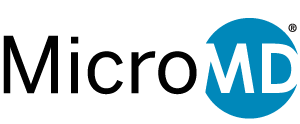A Brief Guide to Telemedicine
Telemedicine has become quite the buzz word lately. The combination of technology with the increasing level of busyness in everyone’s lives has led to some interesting changes in the provider/patient relationship. Gone are the days of having no other option aside from a face-to-face, in person appointment with your provider. Thanks to telemedicine many encounters can now be taken care of remotely, not to mention the options for providing vital information to your provider through the use of wearables and other technology in order to obtain a more complete picture of your overall health. Let’s take a high-level look at telemedicine.
What is telemedicine?
The World Health Organization defines telemedicine as “the delivery of health care services, where distance is a critical factor, by all health care professionals using information and communication technologies for the exchange of valid information for diagnosis, treatment and prevention of disease and injuries, research and evaluation, and for the continuing education of health care providers, all in the interests of advancing the health of individuals and their communities.” To put it more simply, telemedicine is the practice of medicine from a distance using communication technologies.
What type of applications are used for telemedicine?
There are four main applications that are currently in use for telemedicine, each with their own ideal uses and benefits. The first is live videoconferencing. This is when two parties connect live through audiovisual means. Think of a video call, but with the purpose of practicing medicine. This is most often used for an encounter between a patient and a provider.
The next application is store and forward videoconferencing. This is where one party sends a pre-recorded video to another party to be reviewed at another time. The two parties are not syncing live with store and forward. This application is often used for a primary care provider to conference with a specialist regarding a patient’s case.
Remote patient monitoring (RPM) is the next application. This is the use of electronic tools such as monitoring systems and wearables that are connected between two locations, most often patient and provider, to allow for patient health information to be recorded and submitted to the provider in order to have a better understanding of the patient’s overall health or to monitor a chronic condition.
Finally, there is mobile health (mHealth). Mobile health is simply the provision of public health information and health care through mobile devices. This application is especially useful for getting educational information, care reminders, and notifications about disease outbreaks and other public health concerns to patients in an efficient manner.
What are the benefits of telemedicine?
For providers
Providers can see a number of benefits from using telemedicine. First of all patient satisfaction scores often improve with the use of telemedicine. By providing convenient access to care and lessening wait times, patients will become happier with your practice. This is turn leads to patient loyalty, greater reimbursement, and more patient referrals.
Next is the added revenue stream. Not only is telemedicine another service that you can offer and collect on reimbursement for, but also the convenience of telemedicine can allow your practice to attract new patients. Such convenience can also allow for your current patients to turn to you for treatment more often, increasing reimbursement again.
Another benefit is the reduction of readmissions. When you’re in closer contact with your patients you have more opportunities to assess symptoms and identify problems before they become major issues requiring inpatient treatment.
Finally, there is the improvement to practice workflow. Using telemedicine is a great way to allow your clinical staff to assess a patient who is calling into the office, serving almost as a technological triage so that recommendations can be made for appropriate care in an efficient fashion.
For patients
Patients also see significant benefits from the use of telemedicine, starting with the ability to have access to more specialists. Without telemedicine, a patient is limited in who they can see for care by their geographic location and how much they’re able to travel. Telemedicine expands the number of specialists that are within reach for a patient by eliminating the issue of distance. Providers that would otherwise be too far away are able to connect with patients through video chats, secure phone calls, and other virtual methods.
Next is a reduction in costs, both of time and money. Patients have to make sacrifices when they need to go to the doctor’s office. They’re required to take time off work and use gas in their vehicle, and once they arrive they often find themselves at the mercy of their doctor’s schedule. Telemedicine allows some visits that previously would have been done in person to be done virtually, saving the time and money it takes to make it to the practice.
Better health outcomes are also enjoyed by patients thanks to telemedicine. When seeing a doctor is more convenient, patients are less likely to put it off. This means they will get treatment for conditions more quickly. Additionally, when patients who are perhaps only being seen for a follow up are able to do so remotely, this eliminates the exposure to germs in the practice waiting room, preventing further illness.
Finally, telemedicine allows patients to become more engaged in their health care. When patients have more access to their providers with better communication, they’re more likely to take ownership and initiative in their own care.
Telemedicine is only becoming more popular as more and more providers and patients see the benefits this connectivity can provide. Are you ready to get started with telemedicine? You need medpod. Medpod is an integrated telehealth software that uses best-in-class professional medical and laboratory devices to provide groundbreaking telediagnostics transmitted to you in real time. Combining high-definition video, multi-stream audio, and data from professional grade medical devices, medpod covers all the bases of telemedicine to get your practice off an running.
Ready to learn more about how Medpod can benefit your practice? Call us today at 800.624.8832 or visit us at micromd.com to learn more.









